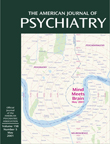Cognitive Behavior Therapy for DSM-IV Personality Disorders: Highly Effective Interventions for the Most Common Personality Disorders
Cognitive behavior therapy has been shown to be an empirically effective treatment for many axis I disorders (e.g., depression, panic disorder, bulimia nervosa). In recent years, this approach has been used to treat axis II disorders, with the most attention directed at borderline personality disorder. In addition, several authors have developed cognitive behavior therapy approaches to the treatment of other personality disorders, placing their own “spins” on effective interventions. The current volume looks at six personality disorders (avoidant, borderline, dependent, narcissistic, histrionic, and obsessive-compulsive) and discusses their treatment from one consistent viewpoint.
This relatively short book is divided into two parts that build very effectively on each other. The initial three chapters discuss basic principles of cognitive behavior therapy with a strong emphasis on conceptualization of personality disorders, schemas, and core beliefs. Additionally, Sperry spends time developing the understanding of character and temperament dimensions of personality disorders to further emphasize the complex nature of treatment with this disorder. The remaining chapters address treatment of the six disorders with a set of general guidelines and specific treatment strategies.
Each chapter follows the following pattern: 1) DSM-IV diagnostic criteria and a description of the disorder, 2) effective treatment strategies, 3) a summary of the interventions, 4) a good case example of use of the interventions, 5) references, and 6) a table that summarizes the various interventions and the sequence in which they may be applied. Especially valuable in this volume is the consistency in approach across each disorder. The author deals with each treatment approach according to the same guidelines. The effective treatment strategies include discussions of how to engage the disorder in treatment with an emphasis on the initial sessions as well as facilitating collaboration for treatment. Unusual for a book on cognitive behavior therapy is the open discussion of transference/countertransference issues. This is a very helpful discussion, especially for the novice therapist. Each chapter addresses such therapeutic issues as schema change, working with core beliefs, and the influence of temperament in the development and alteration of the disorder. Additionally, each chapter discusses the influence and place of medication management in the treatment of personality disorder. Each chapter also includes, when appropriate, the use of group, couples, and family therapy. Suggestions on how to integrate the different approaches are included. Another focus is a strong discussion of maintenance of therapeutic gain, termination issues, and relapse prevention.
The book as whole is a very concise and up-to-date perspective of an integrated approach to the treatment of personality disorders. It gives the reader a very good road map to treatment as well as useful alternatives to individual therapy for this group of disorders. It also provides the reader with a blueprint to conceptualize these six personality disorders from a cognitive behavior therapy perspective. However, it would have been more helpful if the author had included treatment strategies for all of the DSM-IV personality disorders and not just a focus on these six specific disorders. As a textbook, this volume will be valuable to advanced undergraduate students in the helping professions as well as first-year graduate students in psychology, counseling, social work, and nursing and first-year residents in psychiatry and family practice. It is a clinically useful and relevant guide to the treatment of personality disorders.



